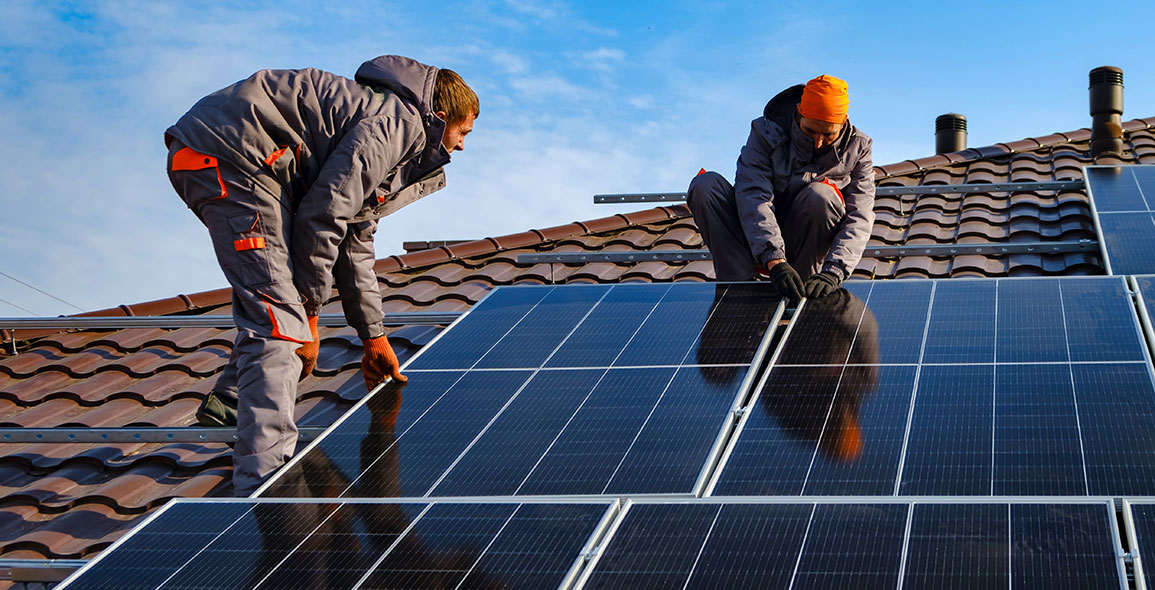
What Are The Choices of Solar Panels To Install On Your Roof
Choosing the right solar panels for your roof can be a daunting task, given the wide range of options available in the market. However, by understanding the different types of solar panels, their efficiency, durability, cost, and aesthetics, you can make an informed decision that suits your specific needs. Here, we will explore the best choices of solar panels for residential roofs, focusing on monocrystalline, polycrystalline, thin-film, and bifacial solar panels.
Monocrystalline Solar Panels
Efficiency and Performance: Monocrystalline solar panels are known for their high efficiency and performance. They are made from a single crystal structure, which allows electrons to move more freely, resulting in higher efficiency rates of around 15-20%. Some high-end monocrystalline panels can even exceed 22% efficiency. This makes them an excellent choice for homes with limited roof space, as fewer panels are needed to generate the same amount of electricity compared to other types.
Durability and Lifespan: Monocrystalline panels are highly durable and come with a lifespan of 25-30 years. They perform well in both high and low-temperature environments, making them suitable for various climates. Their long-term reliability and robust warranties often make them a cost-effective choice despite their higher initial cost.
Aesthetics: These panels are typically black, which tends to blend well with most roof colours, providing a sleek and modern look. This aesthetic appeal can be a significant factor for homeowners concerned about the visual impact of their solar installation.
Polycrystalline Solar Panels
Efficiency and Performance: Polycrystalline solar panels are made from silicon crystals that are melted together. They are slightly less efficient than monocrystalline panels, with efficiency rates ranging from 13-16%. However, technological advancements have been narrowing this gap. Polycrystalline panels are a good option for homeowners with ample roof space who can accommodate the additional panels needed to achieve the desired energy output.
Durability and Lifespan: Polycrystalline panels have a similar lifespan to monocrystalline panels, typically around 25-30 years. They are durable and can withstand various weather conditions, although they might be slightly less efficient in high-temperature environments compared to monocrystalline panels.
Aesthetics: These panels are usually blue, which might not be as visually appealing as the black monocrystalline panels. However, they are generally less expensive, making them an attractive option for budget-conscious homeowners.
Thin-Film Solar Panels
Efficiency and Performance: Thin-film solar panels are made by depositing one or more layers of photovoltaic material onto a substrate. They are less efficient than crystalline-based panels, with efficiency rates between 10-12%. However, they perform better in low-light conditions and high temperatures, which can be beneficial in specific climates.
Durability and Lifespan: The lifespan of thin-film panels is generally shorter, around 10-20 years, depending on the materials used. They are also less durable than crystalline panels, making them more susceptible to damage over time. However, their flexibility and lightweight nature make them easy to install on various surfaces, including curved roofs.
Aesthetics: Thin-film panels are often black and have a uniform appearance, which can be more aesthetically pleasing for some homeowners. Their thin and flexible design allows for more innovative installations, such as integrating them into roof tiles or other building materials.
Bifacial Solar Panels
Efficiency and Performance: Bifacial solar panels can capture sunlight from both sides, significantly increasing their efficiency and energy output. This dual-sided capability can lead to efficiency rates of 15-20%, with potential boosts depending on the installation environment. They are particularly effective when installed in areas with high albedo (reflective surfaces), such as snow-covered or sandy regions.
Durability and Lifespan: Bifacial panels are made with durable materials to protect both sides, resulting in a lifespan of 25-30 years. Their robust construction and advanced technology make them a reliable option for long-term solar investments.
Aesthetics: The appearance of bifacial panels can vary, but they generally have a more modern and high-tech look. Their see-through design can be a unique and attractive feature, especially in innovative architectural designs.
Considerations for Choosing the Right Solar Panels
1. Roof Space and Layout:
- Assess your roof's size, shape, and orientation. Monocrystalline panels are ideal for limited spaces, while polycrystalline and thin-film panels can be more suitable for larger areas.
2. Energy Needs:
- Calculate your household's energy consumption to determine the number of panels required. Higher efficiency panels like monocrystalline and bifacial may reduce the total number needed.
3. Budget:
- Consider the upfront cost and long-term savings. Monocrystalline panels have higher initial costs but offer better efficiency and longevity. Polycrystalline panels are more budget-friendly but may require more space.
4. Climate:
- Choose panels that perform well in your local climate. Thin-film panels are excellent for high-temperature areas, while bifacial panels can take advantage of reflective environments.
5. Aesthetic Preferences:
- Consider the visual impact of the panels on your home. Monocrystalline panels offer a sleek look, while thin-film panels can blend seamlessly with roof materials.
6. Warranties and Certifications:
- Ensure the panels come with robust warranties and certifications for reliability and performance. Look for certifications such as UL, IEC, and ISO.
Conclusion
Selecting the best solar panels for your roof involves balancing efficiency, durability, cost, aesthetics, and specific site conditions. Monocrystalline panels are highly efficient and durable, making them ideal for limited spaces and long-term investments. Polycrystalline panels offer a cost-effective alternative with slightly lower efficiency. Thin-film panels provide flexibility and better performance in high temperatures, while bifacial panels maximise energy capture through their dual-sided design. By carefully evaluating your needs and preferences, you can choose the right solar panels that will provide optimal performance and aesthetic appeal for your home.


